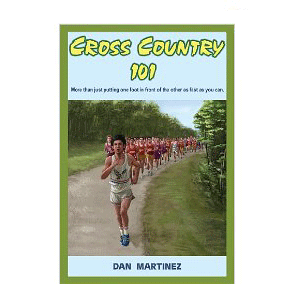Cross Country 101

I cringe when I'm obliged to read books about running. Running is not my religion, but it's an important component of it. Just as the virgin birth, or the dharma, or the day of judgment, might be a tenet of your faith, running is a tenet of mine. Please pardon my blasphemy. Nevertheless, if it's true that "where your treasure is, there will your heart be also," running is something I treasure, and few things in this world do I treasure more.
It is therefore like fingernails on a chalkboard when I see a movie or read a book or hear a speaker that depicts running in a way that I feel blasphemes against that lofty place running represents in my life. When I read a book about running—especially a how-to book—more often than not I'm left with the sensation of taking a class in how to create classic and enduring film taught by a director whose own career highlights were the production of bad porn movies.
To me, running is like poetry. If you're a true runner you're a poet afoot. If you're not you're not. You get it or you don't. In order to "get it" you've got to have internalized what it is to be a runner and swimming and cycling—and poetry, and film making— have their own analogs to this. You don't have to be talented to "get it." Just devoted.
With this in mind you might imagine why I usually avoid books and movies on running. But this book reviewed here is another thing entirely. Cross Country 101 is about an incoming high school freshman, too small for football yet bound by the expectation to play a "real" sport, and plagued by the fear and reticence we all remember upon entering high school.
The author is Dan Martinez, who was a runner and who ran at U of Oregon. Martinez co-organizes Runner's Reunited (an annual get-together of hundreds of runners from the 1960s and 70s) and, because he bleeds running, he has the pedigree to get this book right. Cross Country 101 is written for the adolescent. It's pitch perfect for runners the age of Eric Hunt, who is the book's young protagonist. I imagine that the choice of name is an homage to Eric Hulst, the legendary high school runner from Laguna Beach HS in the early 1970s who died of brain cancer at the age of 34. Martinez ran during the Hulst era. (Or, maybe it's an amalgamation of Eric Hulst and Thom Hunt, the latter another infamous high school speedster of Martinez' era.)
C.S. Lewis, famous for his children's books which include the Chronicles of Narnia, once commented that, "A children's story that can only be enjoyed by children is not a good children's story in the slightest." Martinez' book passes Lewis' test. He's pitch perfect in his description of the struggles of the young runner—or of anyone buoyed by the hope, and stricken by the terror, of entering high school. It's an adolescent’s book for those aged 12 to 70 because, if we aren't enmeshed in that moment in life, we certainly well remember it (and don't mind reliving it—from a distance).
Cross Country 101 narrates the cross country season, start to finish, of 14-year-old Hunt, along with a charming set of illustrations drawn by Liang Shan. As an attention-holder, this book stood up against the others I'm currently reading. In fact, I found myself laying everything aside pending its denouement. I hope that this is the first of a series, and I don't see any reason why there shouldn't be at least eight: cross country and track seasons during all four of Hunt's high school years.
The author chose to write in the "historical present" tense and, because I am hobbled by strict and conservative grammarianism (if not another tenet of my religion it's at least an unfortunate tic), it took me a chapter or two to acclimate my ears. "The next night, after school, Eric sits back in his chair and finishes the article in the local newspaper," rather than, "The next night, after school, Eric sat back in his chair and finished the article in the local newspaper." (Bronte and Dickens occasionally used this tense as well, as do a lot of current novelists.)
Martinez had Eric Hunt attending Regal High School, however a few times during the book you'll read Royal in place of Regal. This betrays what Martinez had in mind for inspiration, as Simi Valley's (CA) Royal High School has been a national high school cross country powerhouse for a decade.
Thankfully, this is not a how-to book, where someone who has done nothing in particular to distinguish himself as an authority on running commences to tell us how we are supposed to run. Rather, this is a fictional account that is a spot-on capture of the zeitgeist of high school running. I eagerly recommend Cross Country 101 to anyone, of any age, interested in the topic. It is available both in paperback and Kindle versions. I read the Kindle edition and it also features the illustrations.




Start the discussion at slowtwitch.northend.network